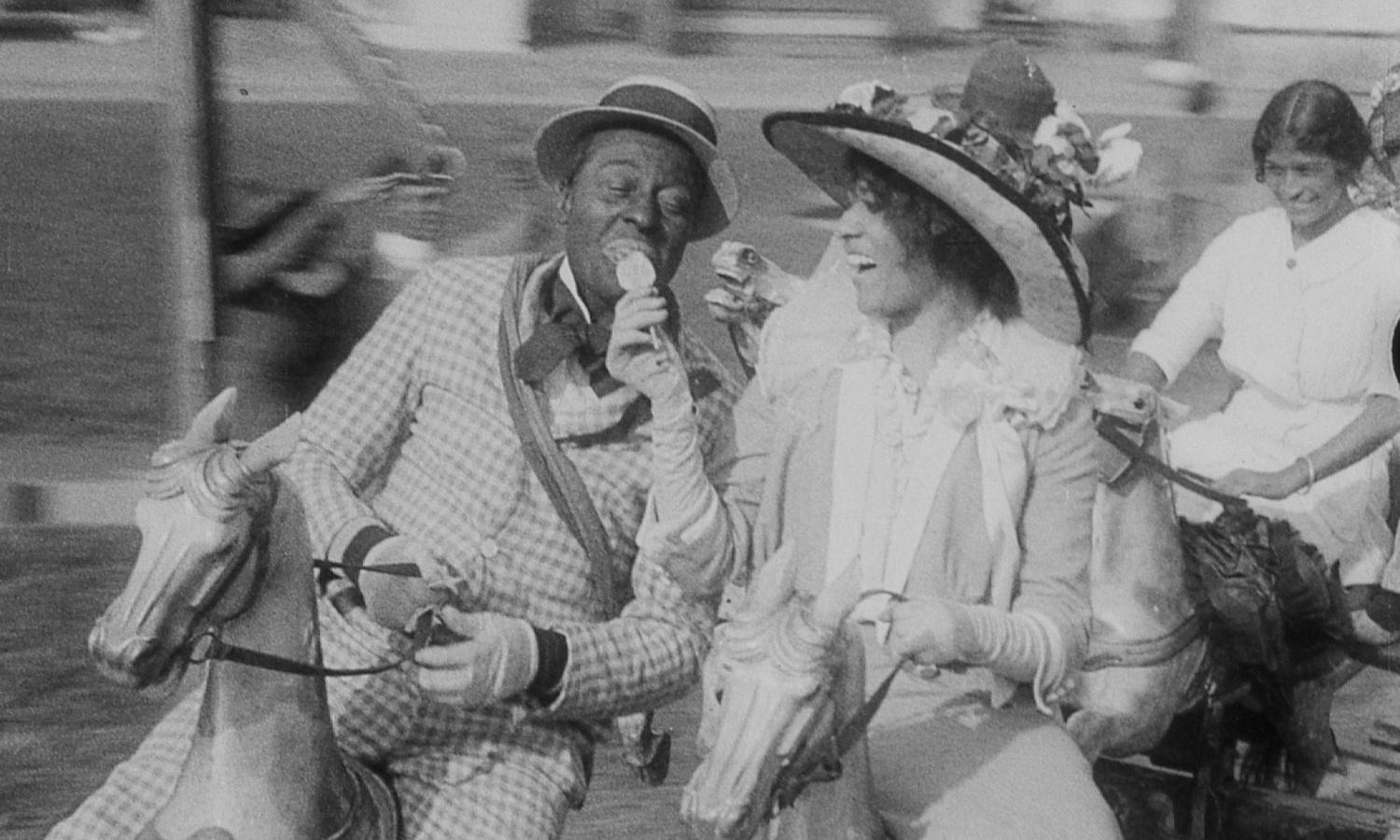Rediscovering Bert Williams
100 years ago, Bert Williams was one of the most famous performers in America. Like a lot of performers at the end of the 19th century and the beginning of the 20th, Williams performed in blackface, adopting the minstrel stereotype of the black clown. Unlike most of those blackface performers, Williams himself was African-American.
Author Caryl Phillips, whose novel Dancing in the Dark is about Williams, tells Kurt Andersen that Williams faced “tremendous criticism” for performing in blackface. But, Phillips says, “he didn’t see it as demeaning. He saw it as part of his costume.”
A new installationat the Museum of Modern Art makes public for the first time a remarkable discovery: Bert Williams’s first movie, the earliest feature film to star an African-American. MoMA acquired the film in 1938 along with everything from the vault of the Biograph movie studio. The reels of film, which had never been edited or released, were unidentified. MoMA curator Ron Magliozzitells Kurt Andersen, “They were unassembled, with no production records, no main titles, no inter titles.” When MoMA did look at these unidentified reels, they realized Bert Williams was the star.
Watch the film MoMA uncovered.
The silent film, which now has the working title, Bert Williams Lime Kiln Field Day Project, was shot in 1913, but never released. Ron Magliozzi believes that might be because of D.W. Griffith’s Birth of a Nation. The popularity of that film, with its racist depiction of Southern blacks, may have discouraged Biograph from releasing Williams’s film, Magliozzi speculates, because it “presents perhaps too positive a view of black life” for audiences of the time.
The film is essentially a romantic comedy. Bert Williams plays the nice guy who wants the girl, but who has to compete with two seemingly more worthy suitors — he’s like a blackface Buster Keaton. But Williams’ character isn’t just a vaudeville stereotype. “Bert’s not a clown in this film,” Magliozzi says. “Bert’s the romantic lead, just the way Keaton and Chaplin were with their eccentric costumes and mannerisms.” His gentlemanly courting of the young lady, “in terms of silent comedy, is a mature relationship.”
According to Phillips, the central question about Bert Williams has always been, “Did he need the blackface in order to perform? Bert’s internal justification to himself or retort to the world is: it is part of my character; my audience will know who I am if I’m in blackface; I need to do this,” he says. Phillips concludes, “Watching this film, I feel he didn’t need to do it. He’s actually a good enough performer. He didn’t need the blackface.”
The Museum of Modern Art intends to make the footage from The Lime Kiln Project available for remixing — but they’re not quite ready yet. Keep an eye on their website for further information.
Video: The Cakewalk sequence fromBert Williams Lime Kiln Field Day Project
